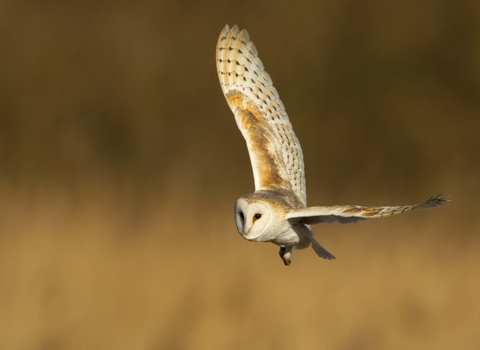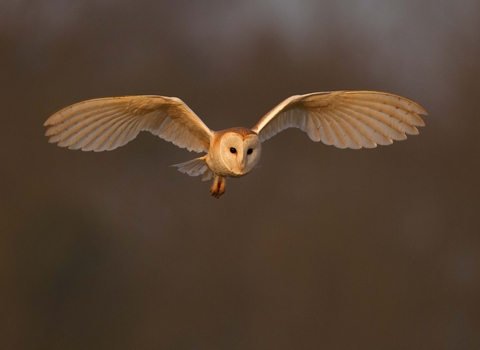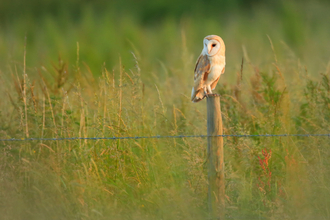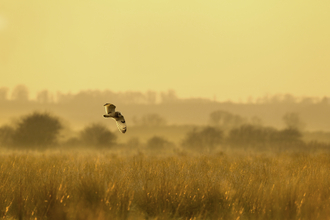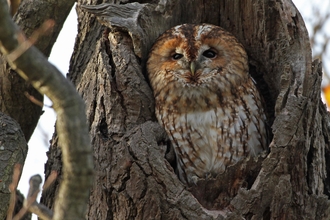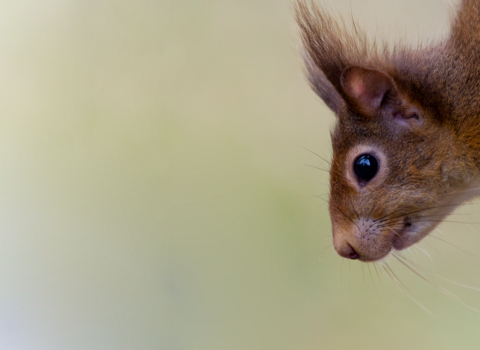Barn owl
The beautiful barn owl is, perhaps, our most-loved owl. With its distinctive heart-shaped face, pure white feathers, and ghostly silent flight, it's easy to identify. Look out for it flying low over fields and hedgerows at dawn and dusk.
Scientific name
Tyto albaWhen to see
January to DecemberSpecies information
Category
Statistics
Length: 33-39cmWingspan: 89cm
Weight: 300g
Average lifespan: 4 years
Conservation status
Classified in the UK as Green under the Birds of Conservation Concern 5: the Red List for Birds (2021). Protected in the UK under the Wildlife and Countryside Act, 1981.
About
Perhaps our most familiar owl, the barn owl will sometimes hunt in the daytime and can be seen 'quartering' over farmland and grassland looking for its next small-mammal meal. However, it is perfectly adapted to hunt with deadly precision in the dark of night: combined with their stealthy and silent flight, their heart-shaped faces direct high-frequency sounds, enabling them to find mice and voles in the vegetation.How to identify
The barn owl has a mottled silver-grey and buff back, and a pure white underside. It has a distinctive heart-shaped, white face, and black eyes.Distribution
Widespread, but absent from the Highlands of Scotland and under threat in Northern Ireland.Did you know?
Throughout history, barn owls have been known by many different nicknames, such as 'ghost owl', 'church owl' and 'screech owl'. But the name 'demon owl', in particular, illustrates how they were considered by some rural populations - something not so difficult to understand when you hear their piercing shrieks and hissing calls.Watch
Barn Owl by Russell Savory (https://vimeo.com/442049233)
Barn Owl by Russell Savory
Listen
The barn owl calls with eerie squeals and a shrieking 'shreeee'. Take a listen...


